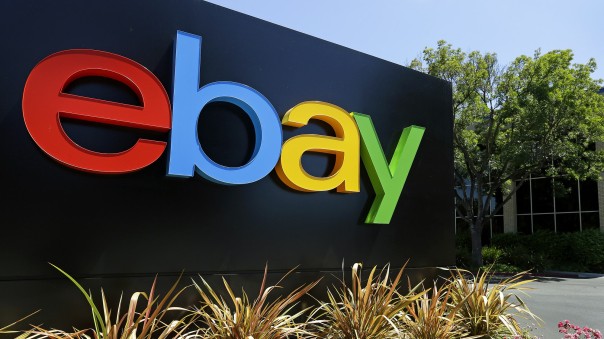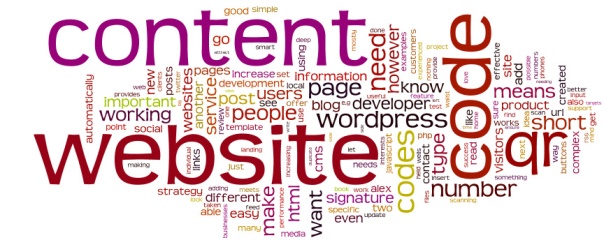How to be a good leader in three steps
 Mark Selby, co-founder of popular Mexican food chain Wahaca, helped turn a single idea into a thriving restaurant brand. Here, he reveals three key qualities every great leader should possess
Mark Selby, co-founder of popular Mexican food chain Wahaca, helped turn a single idea into a thriving restaurant brand. Here, he reveals three key qualities every great leader should possess
Alexander the Great, who by the age of 30 had amassed one of the largest empires in history, knew a thing or two about leadership. The undefeated king, a military master of the ancient world, once said: “I am not afraid of an army of lions led by a sheep; I am afraid of an army of sheep led by a lion.”
What is it about those in charge of a dominant army, or powerful FTSE 100 company, or even a rapid-growth start-up, which makes them outstanding leaders – so much so that others want to follow?
Mastering delegation naturally breeds empowerment, and boosts morale
One such company to have shown good leadership from the off is Wahaca, which now boasts more than 20 restaurants across Britain, having opened the first one, in London’s West End, in 2007. Mark Selby founded the brand alongside chef Thomasina Miers and through their combined energy and passion – and, crucially, by instilling a clear company culture – the pair have seen the popular Mexican food chain thrive in an uber-competitive market space.
The link between inspirational leadership and the spoils of success – in business as on the battlefield – is inextricable, but what are the three key qualities every great leader should possess, according to Mr Selby?
Honesty
It pays to be honest, so set your stall out carefully. Top leaders have an infectious enthusiasm, and will empower their workforce through the creation of a clear vision that they are visibly committed to.
“It is really important that the ethos you started the business with carries on, even though you have got bigger, or things have changed,” says Mr Selby. “Be transparent, encourage debate, and be honest.”
If you have a tangible aim, and encourage others to determine how best to reach it in a friendly environment, then they are more likely to buy in to it. Further, by being honest and authentic, such leaders will earn the goodwill and trust of their staff. In turn that will improve not only the chances of success, and boost your reputation, but also develop better relations with clients and potential partners.
Strive to inspire
The most respected leaders know every element of their businesses inside out, having taken the time to master them. As such, they have the ability to understand how best to deal with specific issues when they arise and how best to limit them in future. Being armed with that knowledge is similarly important in business meetings with would-be clients and partners.
“As a leader it is your job to show people how to do things. They can see your passion. And if you care more than anyone else cares, then that has to rub off on others,” continues Mr Selby, who used to work for Merrill Lynch and Nando’s before creating the idea for Wahaca with Ms Miers. “It’s amazing how a little act, where you lead by example – such as fixing a restaurant roof quickly – can make a big difference.”
Having a nimble, logical mind, as well as a firm handle on the goings-on within your own company – and a grasp of potential disruptive influences, inside and out of your given industry – are tools any successful leader requires.
Ability to delegate
“Surround yourself with the best people you can find, delegate authority, and don’t interfere as long as the policy you’ve decided upon is being carried out,” suggested Ronald Reagan, president of America between 1981 and 1989. This tactic served him well, and for business leaders – especially those who have founded a company – this can be a difficult skill to develop. Learn to trust your team with the grand vision; work out the strengths of each person and determine how best they can assist.
“There may be leadership battles,” adds Mr Selby, “but you have to quickly work out who is good at what. Know your strengths, and know the strengths of those around you – which may be things you are not so good at. Work out a structure that brings the best out of you and your team. For instance, I’m open, confrontational and honest – I can often pick out the negatives in things. While that is perhaps not the best management style, Thommi is more sensitive to people’s feelings, so we work well together. With that foil we can look at things from every angle, and that is important. And, importantly, whatever happens, don’t be too serious.”
Mastering delegation naturally breeds empowerment, and boosts morale. It is vital to delegate, in order to optimise overall efficiency, for both you as a leader and the workforce. Make sure you take the time to show your appreciation for their hard work, and recognise the importance of a break.
Budget 2016: Tax breaks from next April for Online Digital Traders
 People who hire out their homes or trade online through websites like and eBay will be granted new tax allowances worth £1,000 a year, George Osborne announced.
People who hire out their homes or trade online through websites like and eBay will be granted new tax allowances worth £1,000 a year, George Osborne announced.
The Chancellor said he wanted to support “the new world of micro-entrepreneurs” with tax breaks, which will be introduced from April 2017.
It will mean that individuals with online trading or property income will not have to declare or pay tax on the first £1,000 they earn from each source.
“There will be no forms to fill in, no tax to pay it is a tax break for the digital age and at least half a million people will benefit”, Mr Osborne said.
The two tax breaks are expected to cost £235m a year by 2018.
“The rapid growth of the digital and sharing economy means it is becoming easier for more and more people to become ‘micro-entrepreneurs,'” the Treasury said in the Budget documents.
“To help make the tax position more certain and simple for these individuals, from April 2017 the budget introduces two new £1,000 allowances for property and trading income”.
A spokesperson for Airbnb said: “This is good news for the growing number of Airbnb hosts in the UK who are sharing their homes, earning a little extra money to pay the bills and bringing new economic benefits to their communities.
“We applaud the government for supporting hosts and progressive business models across the country; their leadership on this important issue is an example to the world.”
Osborne added: “But there’s been a big rise in overseas suppliers storing goods in Britain and selling them online without paying VAT. That unfairly undercuts British businesses both on the Internet and on the high street, and today I can announce that we are taking action to stop it.”
The Treasury notes that “the rapid growth of the digital and sharing economy means it is becoming easier for more and more people to become ‘micro-entrepreneurs’. However, for those making only small amounts of income from trading or property, the current tax rules can seem daunting or complex.”
Debbie Wosskow, the founding chair of Sharing Economy UK (SEUK), said: “This is a colossal win for Britain. We are the first in the world to introduce a sharing economy allowance that allows individuals to earn up to £2,000 tax free. This demonstrates the UK truly is the home of the sharing economy and leading the global stage in this space.
“The trade body, Sharing Economy UK, has championed tax breaks such as this for some time. Consumers need to be able to use sharing economy platforms such as Airbnb and TaskRabbit to top up their income without the fear that they are breaking the rules.”
Growing Your Business – Some Key Tips
 As an entrepreneur, you are not a singular person. You have to understand that you need other people to grow. These people need to feel your passion, enthusiasm and energy. There is nothing more satisfying than seeing your staff as focused on your business as you are — take them with you on the journey and they’ll reward you with their hard work.
As an entrepreneur, you are not a singular person. You have to understand that you need other people to grow. These people need to feel your passion, enthusiasm and energy. There is nothing more satisfying than seeing your staff as focused on your business as you are — take them with you on the journey and they’ll reward you with their hard work.
Be optimistic, enjoy developing your business through its different stages of growth. Be prepared for what is around the next corner, but don’t stop your journey when you get there. You have to learn from the past, be in the moment, and look to the future all at the same time.
Value Research – Continually research; you will learn more about your customer and identify potential new markets for expansion.
Solid Planning – Plan your growth carefully and remain in control. Always look forward three years and know what you need to do, what machines you’re going to buy and what training your teams will need. Good panning allows your strategy to take into account the resources and goals you have now, and what you need to do to get your business growing more towards even bigger and better growth and profitability.
Avoid Too Much Detail – Focusing on too much detail often leads to inaction. Try not get too caught up with all the small things you have to do to get started. Everything can be figured out. Break it all down into simple steps and just get started.
Know Your Market – It’s not enough to know your own product inside out; you need to understand the market it will sit in, including your customers, competitors, retailers, experts and the media, indeed the whole picture. This knowledge is invaluable to you so that you can be sure your idea is viable. The ability to position your product as part of a bigger marketplace creates a more compelling proposition when you start engaging retailers, customers and the media.
Customer Feedback – Focus on what your target consumer wants, allow them to help shape your products by listening to feedback, and if your product does not get high rating reviews, make a change. No amount of great marketing can be a substitute for a poor product. By knowing your USP, forming a clear plan and regularly reviewing it, you’ll stay one step ahead.
Do Not Ignore The Importance of The Finance Part – It is great to have bold aims, but working them out financially will determine how realistic they are. With firm financial foundations, the company and its people can really believe what is possible and be more committed to achieving these goals. Keep track of the actual achievement, evaluation of your work is as valuable as the job itself.
Embrace The Importance of Others Expertise – Surround yourself with people who have expertise in areas you need help with – people offer you advice because they want you to succeed.
Hire Different Skill Sets – Business owners are often frustrated that their teams don’t demonstrate the same level of dedication, creativity, energy and motivation as they do. Don’t expect your teams to be like you. If they were, they’d be doing your job. Embrace different talents and skills because it will help the business in the long run.
Being an entrepreneur is an exciting life and career choice. It allows you to make your dream and vision come true, even if, you need to make adjustments along the way. You have that vision entrenched in your head and regardless of what happens, you will forever see yourself making the vision and dream come true.
Growing your business is an exciting opportunity and exposes your business to a wider audience. This increased pool of potential customers can dramatically improve sales, resulting in increased profitability. Customers, like employees, are important in operating a successful company. Expansion, when done properly, can place the company in front of many new and potential customers.
Remember, it’s all about finding the right sources of income and adapting and growing your business over time. Some think the end result is the reward, but the path to growing your business is often filled with many other rewards along the way, this enables you to grow personally and professionally.
UK could be better off leaving if TTIP passes, Joseph Stiglitz says
 Joseph Stiglitz, a Nobel-prize winning economist, has said that the UK could be better off leaving the European Union if the Transatlantic Trade and Investment Partnership passes.
Joseph Stiglitz, a Nobel-prize winning economist, has said that the UK could be better off leaving the European Union if the Transatlantic Trade and Investment Partnership passes.
“I think that the strictures imposed by TTIP would be sufficiently adverse to the functioning of government that it would make me think over again about whether membership of the EU was a good idea,” Stiglitz said.
TTIP gives corporations the power to sue governments when they pass regulation that could hit that corporation’s profits.
United Nations figures have shown that that US companies have made billions of dollars by suing other governments nearly 130 times in the past 15 years under similar free-trade agreements.
Details of the cases are often secret, but notorious precedents include the tobacco giant Philip Morris suing Australia and Uruguay for putting health warnings on cigarette packets.
“Every time you passed a regulation against asbestos or anything else, you would be sued,” Stiglitz said.
“There’s nothing in TTIP to stop you writing the regulation. You can write the regulation. You would just have to keep writing a cheque to Philip Morris to make up for the profits that they would have had if they were able to kill people like they were able to in the past,” he said.
The planned TTIP agreement between the EU and the US would create the world’s largest free-trade zone, sweeping aside tariffs and other barriers to the trade of goods and services. Proponents say it would encourage investment and create jobs.
But the controversial provision for an investor-state dispute settlement would allow multinationals to sue foreign governments if it thought regulations were hurting profits.
Stiglitz described TTIP as “a massive rewriting of the rules with no public discussion”.
“The dangers to our society are very significant,” he said.
Stiglitz was speaking at an event hosted by the shadow chancellor John McDonnell as part of the Labour Party’s series on new economics. Elsewhere in the talk, he described the EU as a “visionary idea”, but said that politicians had been distracted by the creation of a single currency without the political integration needed to make that work.
He was broadly supportive of the UK’s membership of the EU, highlighting the examples of Sweden and other European nations that are part of the union but have agreed different rules.
“In my opinion you should let the euro go to keep the union as a whole,” Stiglitz said
Britain should vote for Brexit before the inevitable Eurozone meltdown
Despite David Cameron’s embarrassing imitation of Oliver Twist in Brussels last week, his negotiations ended up mired in the minutiae of trivial amendments to the UK’s relationship with Europe. Small restrictions to child benefit and vague wording about exemption from a common currency and “ever closer union” are the thin gruel that our hapless Prime Minister is now presenting to the nation as evidence that he has achieved real reform.
It was not really his fault that he had to deal with such meaningless drivel. Since he had to get agreement from the 27 other member states on every single point, it was inevitable that his initial demands would be diluted. But will these issues really be at the forefront of people’s minds when they vote on 23 June? Certainly not.
In Brussels last week, I was presented with “facts” by an EU official (who presumably believes them) suggesting that Britain was bust, a lagging economy, and poorer than France. As an economist and a businessman with extensive interests in the EU, I know the opposite to be true. The UK is really the only dynamic large economy in Europe, enjoys superior growth, lower unemployment, and has a per capita GDP that is significantly higher than that of France and Italy.
Some might argue that the UK’s superior economic performance is because we are in the EU, but I contend the opposite. Without the net transfers of wealth that we make to the EU on an annual basis, without the red tape that comes with being a member, and without the inevitable compression of wages that occurs because we must take in all comers, the UK would grow even faster.
Powerful arguments have been made for leaving the EU by a wide range of people, and I don’t mean to repeat them here, but rather to emphasise three points that I believe to be highly potent in forming an opinion on the matter.
First, sometimes it is good to visualise large numbers in a different way. The net transfers we make to the EU on an annual basis are the equivalent of 350,000 people working full time at the average salary sending all of their wages to the EU for transfer to other people in other countries. That is a larger body of people than the British Army at the start of the Second World War, larger than many cities, and approximately the same as the population of the smallest EU states, Luxembourg and Malta.
Second, it is interesting that the establishment people lined up on the Remain side don’t seem to be drawn from the ranks of entrepreneurs, but rather from state-sponsored organisations or large multinationals, whose interests are very much aligned to those of the EU. Stuart Rose, as an example, has always been a manager of other people’s businesses, and hasn’t had to start from scratch like many of the people who support the Leave campaign. Those of us who have built businesses from scratch, including people much more successful than me, such as James Dyson and Peter Hargreaves, know just how hard it is to build a business, and both of them say how much worse it is to do this as members of a strangulating organisation such as the EU.
Give me their views any day over those of corporate executives from Marks and Spencer or Goldman Sachs. Not wanting to rub it in, but two months into the year, five out of six of Goldman’s key trades for 2016 had been stopped out. Yet its views on the EU are still taken seriously!
Perhaps more importantly, we should leave the EU because the project itself is failing. France and Italy are in what is known as a debt trap. They cannot grow their nominal GDPs sufficiently fast under almost any circumstances – and certainly not with the constraint of being members of a common monetary policy and currency – to stop their debt piles from growing. One day the markets will react negatively, especially given that large parts of their debt is owed to foreigners. Interest rates on their government bonds will soar, they will be unable to refinance, and they will have to leave the euro. Or the euro will have to be reformed into two or three blocs.
When this happens and I am guessing that it will within three years – the crisis will be so huge that Germany and Britain (if we are still in) would have to help out. This will be a depression causing event, and in those circumstances we are better off in a comfortably appointed lifeboat in the Channel than in a “solidarity” paymaster role. No wonder President Hollande looks even more terrified than usual. France and Italy are going to sink the euro Titanic.
The sharing economy is transforming the freelance landscape
 Many of us use the sharing economy in our day-to-day lives from ordering a taxi to finding a room for the night. Doing more with less eliminates the need for entire teams of people to facilitate a service; a tap of a smartphone will suffice. This is an industry set to rocket in value to £9bn by 2025.
Many of us use the sharing economy in our day-to-day lives from ordering a taxi to finding a room for the night. Doing more with less eliminates the need for entire teams of people to facilitate a service; a tap of a smartphone will suffice. This is an industry set to rocket in value to £9bn by 2025.
It’s also allowing the smallest businesses to innovate in new and exciting ways. A record 4.6 million people now work for themselves; new and established professionals alike are making use of the sharing economy to find new contracts, and fund as well as run their businesses.
Getting new contracts
The biggest concern if you’re a freelancer is where the next contract is coming from. The sharing economy addresses this by changing we way we find work. The emergence of online platforms such as Upwork, a digital network connecting freelancers and clients, allows users to browse available freelancers’ profiles and interview, hire and work with them instantly.
Rich Pearson, senior vice-president of marketing and categories at Upwork, said: “Businesses in the UK are increasingly turning online to find the skills they need. With access to a global talent pool, they are able to find the talent they need when they need it, and as a result are bypassing local skills shortages. In 2015, we saw a 30% increase in the amount of money UK businesses spent hiring talent online. At the same time, professionals are also taking advantage of online work opportunities and offering their skills and expertise to businesses around the world.”
Finding workspace
As the virtual office becomes an increasingly common way to run a business, with many digital enterprises no longer needing expensive office space, increasing numbers of “work hubs” are also popping up each month. Hundreds now operate throughout the UK. Work hubs often take advantage of otherwise empty industrial spaces, such as former factories, as a place for like-minded professionals to network, collaborate and learn from each other. Membership can be flexible too; space is often rented by the hour, day or week.
Spacehop, meanwhile, is an innovative take on the Airbnb concept: it connects freelancers with available home-office space wherever they need it. Homeowners can share their property on a day-to-day basis while they’re out, meaning freelancers can run their businesses with complete flexibility.
Looking further afield, Swedish firm Hoffice is going even further. It’s a network for people who work from home, aimed at connecting people with complimentary skills graphic designers and coders, for example – so they can share workspace, network and collaborate.
Funding your business
Acquiring finance through bank loans and credit cards is no longer the only option. Now, crowdfunding and peer-to-peer lending services allow ordinary people to provide financial backing to an enterprise, assessing individual requests based on their aversion to risk and the future potential of the enterprise.
P2P lending is taking mainstream lenders by storm as services such as Funding Circle or FundingKnight use the internet to cut out banks. Anybody can put capital forward at minimal risk, cherry-picking the most responsible borrowers and allowing freelancers and small businesses to access finance that wouldn’t otherwise be available.
It’s a global phenomena; P2P lending in China alone topped $150bn (£105bn) in 2015. However, there’s still more to be done if alternative lending sources are going to spur substantial growth for the smallest businesses. More finance needs to be made available to those who need it – the British Business Bank, for example, is a partner of Funding Circle and makes a contribution towards each loan – and professional and trade organisations such as the Association of Independent Professionals and the Self-Employed (IPSE) have a role to play in raising awareness of these alternative funding resources.
It’s the same story for currency exchange. Until recently the most common means of sending money abroad was a high street bank, which would often impose high fees for doing so. Now, TransferWise matches two people who want to send money in opposite directions and pays out in the local currency, effectively initiating a quick, free trade. Users can access the mid-market exchange rate too. When in 1994 Bill Gates said, “Banking is essential, but banks are not”, it was surely this kind of innovation he had in mind.
So what happens next?
The explosion of sharing economy services has changed the commercial landscape for good. The UK’s digital sector is growing at three times the pace of the wider economy and traditional businesses in many long-established sectors may be left behind. But that can only be a good thing for freelancers; the sharing economy model is increasing efficiency and lowering the costs of doing business. It’s likely that we’ll see fundamental change in even more sectors in future as peer-to-peer platforms become more widespread.
How brands can win the ad tech power game
Brands, publishers and ad tech companies are making big strategic moves into digital advertising in order to conquer a key segment of a market that has grown and continues to grow very fast.
According to the latest IAB figures, online advertising reached a landmark €30.7 billion (£23.6 billion) in 2014, with display advertising outperforming all other categories with a growth rate of 15 per cent, and reaching a total value of €10.9 billion. Magna Global estimates that the global programmatic market will increase from $29.3 billion in 2015 to $61.9 billion in 2018, representing a growth rate of almost 21 per cent.
Brands, publishers and ad tech companies are making big strategic moves into digital advertising in order to conquer a key segment of a market that has grown and continues to grow very fast.
In 2014, we saw a run of major announcements such as Apple’s move into programmatic advertising, Yahoo’s acquisition of programmatic video platform BrightRoll and Publicis’ purchase of programmatic platform RUN.
Over the course of 2015, there were even more mergers and acquisitions as companies scrambled to take advantage of programmatic growth. Japanese e-commerce giant Rakuten boosted its US advertising proposition with the acquisition of programmatic-buying tool Deep Forest Media. Rubicon Project acquired search and retargeting firm Chango. News Corp bought social video ad platform Unruly to boost video ad views. And AOL made major strides in cross-platform programmatic technology for marketers and publishers with the acquisition of Millennial Media.
Companies are fighting for a seat at the Programmatic table. At AppNexus, we call this the Ad Tech Power Game (#ATPG). With an extremely fragmented and complex ad-tech market, #ATPG is set to become even more fiercely fought in the months to come.
Authoritative voice of the digital advertising landscape Terrence Kawaja, founder and chief executive of Luma Partners, a boutique investment bank specialised in digital media, recently estimated that of the roughly 2,000 companies currently operating in the ad tech market, no more than 150 will experience a successful liquidity event. The others will either be swallowed whole by as many as 15 mega-platforms or worse still, fail altogether.
Just under half of advertisers (47 per cent), two-thirds of advertising agencies (64 per cent) and nearly all media agencies (92 per cent) are now using programmatic, as shown by AppNexus’ recent Global Trust Report. And as both publishers and advertisers’ understanding of programmatic matures, their demand for a full-stack solution that enables them to regain control over the exchange of their digital inventory across multiple formats (e.g. video and display) and devices (e.g. desktop, mobile, tablet) will increase too.
#ATPG is fundamentally driven by the necessity of addressing the needs of both publishers and advertisers, and the companies most likely to survive this transition will be those that will genuinely be able to provide “end-to-end” technology for them.
Publishers and advertisers will also call for a solution that enables them to simplify both real-time bidding and automated guaranteed buying and selling. While holistic yield management and analytics will help publishers to monetise their content and drive revenues, control of data and more sophisticated decision-making technologies will allow advertisers to run campaigns more efficiently and effectively.
Building a high-standard single-platform technology requires great investment in terms of time and resources, and it’s extremely complicated, so not every ad tech company can, or should, endeavour to build one. Some players may decide to build a full-stack solution via acquisitions rather than build the technology organically, and this doesn’t come without challenges either. In fact, those companies that are the result of multiple acquisitions and mergers will have to overcome issues such as lack of speed, complicated integrations, inadequate reporting, and insufficient buy-side liquidity. In reality, it’s unlikely that any company will have created its single-platform solution from scratch, or entirely by acquisition.
In addition to a single-platform solution, both publishers and advertisers will demand proof of scale and reach, and most significantly, the commoditisation of services and compression of pricing, as the entire rationale behind migrating a business to a single platform is to obtain efficiency and economies of scale.
Further, the market will call for greater visibility in relation to spend, performance and inventory quality. Publishers and advertisers will only benefit from migrating to single-platform partners if the single-platform partners are able to provide a more transparent ecosystem.
In order to win the Ad Tech Power Game, companies will need to effectively enable publishers and advertisers to powerbuying and selling across an array of formats and marketplaces effectively, and provide highly specialised forecasting, data management and analytics—all in one seamless solution.
Since its earliest days, ad tech has shown itself to be a dog-eat-dog industry. With the programmatic market expected to grow at the staggering rate of 20 per cent annually between 2015 and 2018 – outpacing every other category of digital and non-digital advertising, according to a recent forecast by Magna Global – the stakes have never been higher. The race to the single platform has begun. Who will get to the finish line first remains to be seen.
Nigel Gilbert is the vice president of strategic development, EMEA, at AppNexus
Developing a Marketing Strategy for your Small Business
As well as being the major source of job creation in developed economies, small businesses are critical to driving economic growth through innovation and market expansion. There is growing evidence of the economic significance of the small proportion of businesses that exhibit high growth, which are to be found in all regions of the country and in all industry sectors.
Marketing plays a key role in the success of any small business and its potential growth. Your market is the individuals and organisations who buy your business’s products or services. Identifying who they are is the role of marketing. Remember that marketing and selling are different activities. Selling is the activity of influencing people to buy the goods or services.
When you’re in business for yourself, marketing is incredibly important. A good marketing strategy helps you define your vision, mission and business goals, and outlines the steps you need to take to achieve these goals.
Your marketing strategy shapes the way you operate your business, so it should be planned and developed with your team and can serve as an effective business tool that:
- Defines your business and its products and services
- Describes the market position and role of your products and services in the market
- Describes your customers and your competition
- Distinguishes the different marketing methods you will use
- Enables you to create a marketing plan and measure its effectiveness.
A marketing strategy sets the overall direction and goals for your marketing, and your marketing strategy could be developed for a few years. The marketing strategy will assist you in realising your business’s goals and building a strong reputation for your products.
A good marketing strategy helps you target your products and services to the people most likely to buy them. It usually involves you creating one or two powerful ideas to raise awareness and sell your products.
Your marketing strategy should include the following:
Identify your business goals – This will enable you to arrive at set of marketing goals to support them. Don’t ignore the SMART approach to developing goals.
State your marketing goals – By listing your specific marketing goals these will motivate you and help you measure your success. These marketing goals could be long-term and might take a few years to successfully achieve. A good marketing strategy will not be changed every year, but revised when your strategies have been achieved or your marketing goals have been met.
Research your market – Research is an essential part of your marketing strategy. You need to collate as much information as possible about your market, such as its size, growth, social trends and demographics. Use your market research to develop a profile of the customers you are targeting and what their needs are.
Research Your Competitors – Similarly, as part of your marketing strategy you should develop a profile of your competitors by identifying their products, supply chains, pricing and marketing tactics. Identify your competitive advantage and what sets your business apart from your competitors.
If you can choose the right combination of marketing across product, price, promotion, place, people, process and physical evidence. , your marketing strategy is more likely to be a success. Each is a variable you control and your effective use of the marketing mix will go a long way to ensuring your strategy is a success in attracting the customers you need to make your business a success.
Don’t ignore the importance of testing your ideas – Do some research, speak to your prospective customers, suppliers, staff and distributers assess what works and what may need tweaking. You will need to choose a number of tactics in order to meet your customers’ needs, reach the customers within your target market and improve your sales results.
Remember that your marketing strategy doesn’t have to be set in stone. Ideally it should as flexible as possible and subject to regular review and updating to reflect market changes and conditions. Don’t be afraid to embrace new technologies and always be prepared to adapt to the needs of your customers.
8 Smart Tips for Protecting Your Business Data
- Conduct a cyber security & data audit. If you don’t know what parts of your business are defenceless or what data you have that needs to be protected, you can’t properly secure it. It is critical that you work with a professional to audit your entire IT infrastructure computers, network, and mobile devices to determine what you need to do to prevent hackers from accessing your network.
- Ensure staff are aware of their vital role in data security. Your staff are your front line of defence when it comes to security. Of course, hackers can access your network remotely and siphon off data without ever stepping in your office. However, attentive staff can ensure that human error which is a big cause of data security breaches is minimalised.
- Use strong passwords and change regularly. Too many of us use simple passwords that are easy for hackers to guess. When we have complicated passwords, a simple attack by a hacker using an automated tool that uses a combination of dictionary words and numbers to crack passwords can’t happen. Don’t write passwords down; try as far as possible to remember commit.
- Encrypt your data. Encryption is a great security tool to use in case your data is stolen and becoming more commonly used nowadays. For example, if your hard disk is stolen or you lose your USB thumb drive, whoever accesses the data won’t be able to read it if it’s encrypted.
- Back up. Security is important, but if your data is not backed up, you may very well lose it. Ensure that your data is properly backed up, and test the backup to ensure that your data can be recovered when you need it.
- Have security policies and review & update them as required. It is one thing to ask employees to work securely, but you must also have clear and simple policies in place for them to adhere to ensuring they are working in a secure environment. Make sure you review these policies after any notable incident and update as required.
- Protect your mobile work force. The explosion of mobile devices, more of your staff are working away from the office and away from the protection of your network security. They are operating “in the open” on your customers’ networks, public networks at coffee shops, or free networks in the park. It is important to ensure that your team’s mobile technology, often connected wirelessly, is as secure as possible.
- Implement a multiple-security-technology solution. Viruses that corrupt data are not the only security threat. Hackers, and their attacks, are more sophisticated than ever, and it is critical to have multiple layers of security technology on all your different devices to secure your data. This multiple security will block attacks on your network and/or alert you to a problem.
Writing Content for Your Online Business – Tips!
 So much content writing produced by businesses now goes online. Visitors to any website are looking for a quick, easy way to find information and, most importantly, in a way that isn’t frustrating.
So much content writing produced by businesses now goes online. Visitors to any website are looking for a quick, easy way to find information and, most importantly, in a way that isn’t frustrating.
You have at most about three seconds to capture a visitor to your web page. Good organisation and presentation of content will keep a user on your site and maintain a favourable opinion of you. Done well, content can build your brand, improve retention and win loyalty. Done poorly, it will cause you to lose your audience’s attention and trust.
So use some of the following tips:
- Know Your Audience – In order to communicate your message effectively, you must know what you want to say and who you want to say it to. People don’t usually read text unless they want information. When you write for the web, start with the same question every time: what does the user want to know?
- Identify Your Keywords and Use Them – Put yourself in your potential clients’ position. What words are most likely searched for by people who want the product or service? Identify keywords and phrases and make sure to use them throughout your online content.
- Keep Your Headlines Short – A good one makes it easier for readers to find your article, and much more likely that they will read what you have written. A bad heading ensures that few, if any, readers will find your text at all, and that those who do will be unlikely to read further.
- Use Subheadings Effectively – A useful tip for keeping a reader engaged and reading the article is to include subheadings every few paragraphs. Just as a well-written heading can draw a reader into a story that he or she might otherwise skip over, subheadings provide a visual road-map for readers.
- Be Factual – Writing clearly means writing without ambiguity, in a way that removes all potential causes of confusion and misunderstanding in the reader. If you make it hard to find what you actually want to communicate in the second or third paragraph, no one may read your article. Authentic, keyword-rich content will be picked up by search engines much more effectively.
- Paragraph Length – To make your documents efficient and attractive for online readers, you need to ensure that the structure of the writing, the way that sentences and paragraphs are arranged on the screen is suitable for web reading. Among the most important elements of structure for online reading is paragraph length.
- Use Simple Short Sentences – One of the best ways to make your content writing friendly is to keep your sentences short and simple. Long-winded sentences, which may read very nicely in print, will often seem uninviting onscreen. They can distract your readers from their primary goal of finding information.
- Edit for the Reader Not Yourself – For many writers, getting the first rough draft of any content article, report, or blog onto the screen is the most painstaking and painful part of the writing process. Organising your ideas into words and phrases, sentences and paragraphs can be a tough job. Just remember you should edit with the reader in mind, not you the writer in mind.
- Make Sure You Include Links – Web readers love great content and if that means linking out to another article/source, then do it. You must keep your readers engaged and interested by providing even more content for them to enjoy. If your content is well written, well organised and engaging your readers, they will come back.
- Don’t Forget To Use Visual Aids – Think about using a variety of different visual images. Try using photographs, tables, diagrams, charts, drawings, key words, or video sequences. Be creative and deliberate in your choice of images to achieve the most impact. The aim is to make your content as attractive and appealing as possible.



